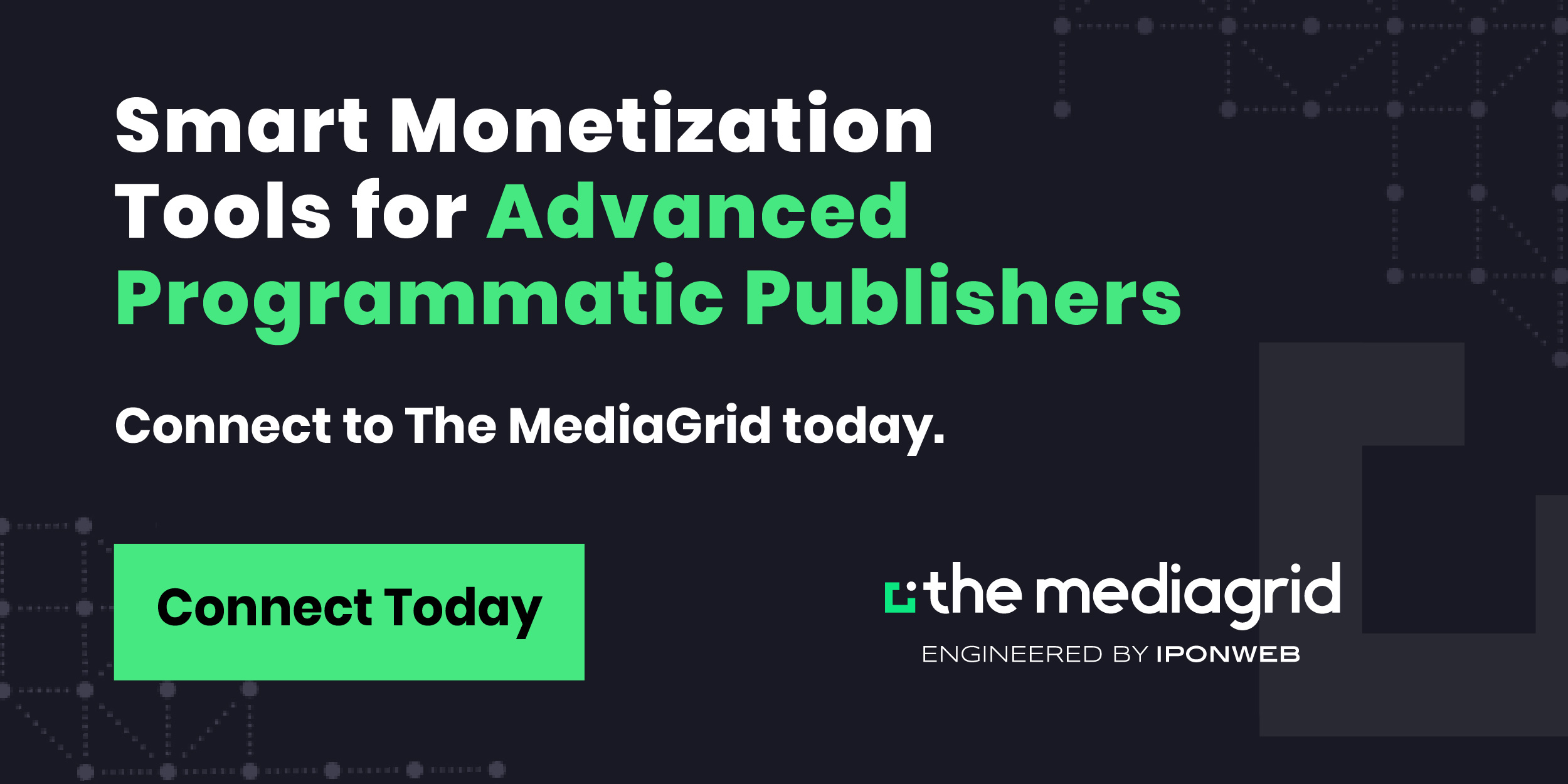| Are Ad Tech Players Causing Major Woes? |
 |
| Middlemen aren't always helpful and can actually cause more harm than good, so says Rebecca is VP, Research & Insights at the News Media Alliance in a recent article. Surprisingly, she's not talking about the tech giants and instead is pointing a finger at smaller players she says make bank at the expense of publishers. The latest accused is brand safety tech, which has been a questionable resource for quite some time. Although they claim to protect the ecosystem, some of their actions have shown otherwise. Keyword ad blocking has gone through the roof as of late, quickly becoming publishers' frenemy. Just ask any news outlet covering hard-hitting topics like the war on Ukraine and whether they can monetize any of that content. Beyond the negative connotations that can often be associated with today's news, brand safety tools (allegedly) are not living up to the hype. Just ask Gannett. What, too soon? While these companies are making millions of dollars already, they are also being accused of infringing on contextual advertising placement by scraping publisher data and selling it without their permission. If true, this could be “not only a violation of publisher terms and conditions, but also the potential infringement of basic intellectual property rights.” |
| We're not ones to throw a pity party but there's no denying that it's tough being a legit publisher these days. Securing a fair share of revenue seems as difficult as trying to collect dollars in a money-blowing machine. It sometimes feels like people forget that although a lot of content is free, it isn't free to develop. This is why the open internet's publishers survive on advertising and also value direct deals. Allow us to break this down:
So if select brand safety companies are not holding up their end of the deal and others are dipping into contextual advertising, pubs have a right not totake this lying down. |
 |
| TLDR: It’s Time to Get Started on Your Identity Resolution Strategy | ||
| If you haven’t noticed – and it would be hard not to – identity resolution remains (and will remain) a hot topic throughout 2022. eMarketer has identified it as both the number one challenge and number one opportunity in the programmatic landscape. And it’s not just the digital supply chain that is concerned about online privacy, as two-thirds of consumers surveyed by the Washington Post felt that the government should do more to regulate digital privacy. And the government is listening. Two bills have already been put forward in 2022 to address digital advertising practices – the Terms-of-Service Labeling, Design, and Readability (TLDR) Act and the Banning Surveillance Advertising Act – and governing bodies are cracking down on offending data collectors (Facebook and Google). With all this activity, it’s no wonder that identity is front-of-mind for programmatic practitioners. |
||
| The government is not alone in implementing privacy changes in the digital ecosystem. Web browser developers are/have culled the third-party cookie, which has resulted in the creation of over 80 new identity solutions – with more on the way. With such a fragmented marketplace and ever-shifting goalposts, it’s no surprise that marketers are confused about the best path forward. To develop an identity strategy that can take into account the dynamics of the marketplace, publishers will be best served by technology partners that are adaptable and have the technical muscle to evolve rapidly. The MediaGrid, a flexible next-generation SSP from IPONWEB, has been built from the ground up to give publishers more tools to help discover and devise an addressability strategy based on all market-viable solutions that ensure no degradation in yield or usability. With The MediaGrid, publishers can securely extend the value of their audience to unlock new revenue in today’s privacy-first digital marketplace. |
||
|
||
| Nielsen Lives to See Another Upfront...For Now |
| The industry is still giving Nielsen a very long and strong side-eye prompted by when their MRC accreditation was stripped last year. And now here comes Byron Allen’s Media Group with a serious lawsuit against the measurement company for fraudulent measurement. Interestingly, this hasn't caused TV networks to take a pause. Quite frankly, it isn't as easy as it seems to quite, and certainly not before the 2022 upfront season is over. Nielsen’s monopoly will hold for another year, but it continues to weaken as brands try alternative solutions. But try is the operative word as advertisers are not fully comfortable and confident in these new alternatives. This ensures good ole Nielsen age and gender demos will be the standard again this season. The new and hungry competitors are chomping at the bits to become the Nielsen replacement. And they are landing substantial deals from the likes of NBCU, Discovery, and Omnicom Media Group, as well as 10-15% from Horizon Media. But these deals are still in the testing phase as no one is fully ready to take the deep plunge. |
| For so long, Nielsen has been the gold standard and even with individual discrepancies here and there, it was never enough to to loosen its industry chokehold. But the last year has really shaken its reign and allowed competitors like Comscore, VideoAmp, and iSpot to vie for their shot. However, every company’s currency options are so starkly different that if migration is split multiple ways, it will force the TV industry to steer away from consistency which is something they've done a great job of maintaining. The other factor to consider is each of these competitors is attractive but most will be reluctant to sever ties with Nielsen until Nielsen One is launched. The good news is Nielsen One will be debuted on a more level playing field so each platform should be assessed fairly. Although Nielsen is safe for now, they are starting to feel the pressure to prove themselves. A truer lesson in never getting too comfortable has never been told. |
| Could Affiliate Marketing Have the Answer for Pubs? |
| Are publishers tapping into all their power as we approach the third-party cookie finish line? According to a recent Adweek article, not even close. Some publishers are feeling more confident when it comes to understanding their data but as ad tech platforms work on cookieless solutions to target advertisers by the masses, they are also leaning heavily on access to publisher data. However, this dependency may leave publishers with the shortest end of the stick and that just does not sit well (obviously). As all stakeholders await the next phase of Google’s Topics API, affiliate marketing could be low-hanging fruit to benefit both publishers and advertisers now. From contextual relevance and hyper-targeting to highly engaging ad experiences, publishers are able to provide all of the above without a cookie alternative in place. Affiliate marketing opens up multiple streams of pub revenue as a result of multiple touchpoints that effectively influence the consumer journey. |
| With the insane rise in retail media, affiliate marketing isn't far behind with the industry currently valued at $12 billion. This should be something all publishers are at least exploring but before dipping your toe, it is important to know what you are dipping into. We can all check the box on content creation but pubs need to identify their strong suits and the types of content that influence their audience to take action. They need to consider the upper funnel activities that push them to the desired end result. Once this is identified, publishers can partner with third-party affiliate partners like Amazon Associates to get started but the real benefit is realized at the direct deal level. Pubs are sitting on a goldmine and when used right, affiliate links can influence the entire consumer journey. This provides an opportunity to create custom advertiser programs beyond display ad budgets. We are not saying this will be easy for every publisher or even more the needle enough. But in 2023 the mantra will be diversificaiton. |
 |
||||||||
|
||||||||
 |
||||||||
|
||||||||
 |
||||||||
|
| @{optoutfooterhtml}@ |








